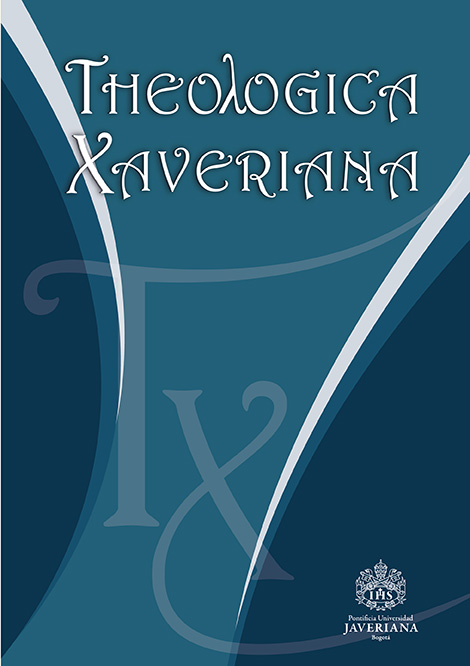Abstract
In this article we hope to establish the relationship between Theology and poetry based on the power of the symbolic. To approach such purpose, we will have to take into consideration the following question: How can the transcendent be lodged in the immanent? We believe that the symbolic character of poetry allows us to speak of this presence of the transcendent in the immanent. For Paul Tillich, symbols point out to something else above themselves. Unlike signs, symbols participate in the power of that which they symbolize. Religious symbols can be true symbols only if they participate in the power of the divine to which they point out. Revelation unveils our ultimate concern. Hence, the revelation of Jesus as the Christ, in which Christian message is rooted, is the final and actual revelation, which in turn resolves the finitude of our existential reason. Religious symbols are double-edged: they point out to the infinite as well as to the finite; they drive the infinite toward the finite and the finite toward the infinite; they unveil the divine life for the human and the human for the divine. Thus, the symbolic character will be the link that moves the poetic language towards the theological language when the symbolic task is, necessarily, that which propels us towards an open horizon, to the mystery that transcends us, and at the same time centers us. For this purpose, we will consult two authors whose thinking will orient our reflection: from a theological point of view, Paul Tillich will be our main reference; from the poetic dimension, the writings of Octavio Paz will guide our inquiry. My hypothesis proposes the possibility of emphasizing on the mystagogical character of poetry. This concept provides a dialogue between the Christian theology of revelation (Tillich) and the idea of “poetic revelation” (as defended by Paz).
Angelus Silesius. El peregrino querúbico. Edición y traducción de Lluis Duch. Madrid: Siruela, 2005.
Concilio Vaticano I. “Costituzione dogmática Dei Filius (1870)”. Vatican, http://www.vatican.va/archive/hist_councils/i-vatican-council/documents/vat-i_const_18700424_dei-filius_it.html (consultado el 9 de mayo de 2019).
Concilio Vaticano II. “Constitución dogmática Dei Verbum sobre la divina revelación (1965)”. Vatican, http://www.vatican.va/archive/hist_councils/ii_vatican_council/documents/vat-ii_const_19651118_dei-verbum_sp.html (consultado el 10 mayo de 2019).
Cuesta Abad, José Manuel y Amador Vega. La novena elegía. Lo decible y lo indecible en Rilke. Madrid: Siruela, 2018.
Dezinger, Heinrich, y Peter Hünermann. El magisterio de la Iglesia. Enchiridion Symbolorum Definitionum (2.ª ed. corregida). Barcelona: Herder, 2000.
Ebeling Gerhard. Dogmatica della fede cristiana. Genova: Marietti, 1990.
Fries, Heinrich. Teología fundamental. Barcelona: Herder, 1987.
Gesché, Adolphe. El sentido (Dios para pensar VII). Salamanca: Sígueme, 2004.
Otto, Rudolf. Lo santo. Prólogo de Manuel Fraijó Nieto. Madrid: Alianza, 2016.
Paz, Octavio. El arco y la lira. México: Fondo de Cultura Económica, 2010.
_____. Las peras del olmo. México: Universidad Nacional Autónoma de México, UNAM, 1957.
_____. Los hijos del limo. Barcelona: Seix Barral, 1990.
_____. Obras completas. Vol. I: La casa de la presencia. Barcelona: Galaxia Gutenberg Círculo de Lectores, 1999.
_____. Obras completas. Vol. VII: Obra poética. Barcelona: Galaxia Gutenberg-Círculo de Lectores, 2004.
_____. Obras completas. Vol. VIII: Miscelánea. Barcelona: Galaxia Gutenberg-Círculo de Lectores, 2005.
Rilke, Rainer Maria. “Novena elegía”. En Elegías de diuno, por R. M. Rilke. Barcelona: Lumen, 1980.
Ruy Sánchez, Alberto. Una introducción a Octavio Paz. México: Joaquín Mortiz, 1990.
Tillich, Paul. Dogmática (Lecciones de Dresde 1925-1927). Madrid: Trotta, 2013.
_____. Main Works. Vol. 6. Theological Writings. Berlin-New York: Walter de Gruyter, 1992.
_____. “Religious Symbols and Our Knowledge of God”. The Christian Scholar 38/3 (1955): 189-197.
_____. Teología sistemática. Vol. I: La razón y la revelación. El ser y Dios. Salamanca: Sígueme, 1981.
_____. “Theology and Symbolism”. En Religious Symbolism, editado por F. Ernest,
-116. New York (NY): The Institute for Religious and Social Studies, 1969.
Torres Queiruga, Andrés. Constitución y evolución del dogma. La teoría de Amor Ruibal y su aportación. Madrid: Marova, 1977.
_____. Repensar la revelación. La revelación divina en la realización humana. Madrid: Trotta, 2008.
Waldenfels, Hans. Teología fundamental contextual. Salamanca: Sígueme, 1994

This work is licensed under a Creative Commons Attribution 4.0 International License.


